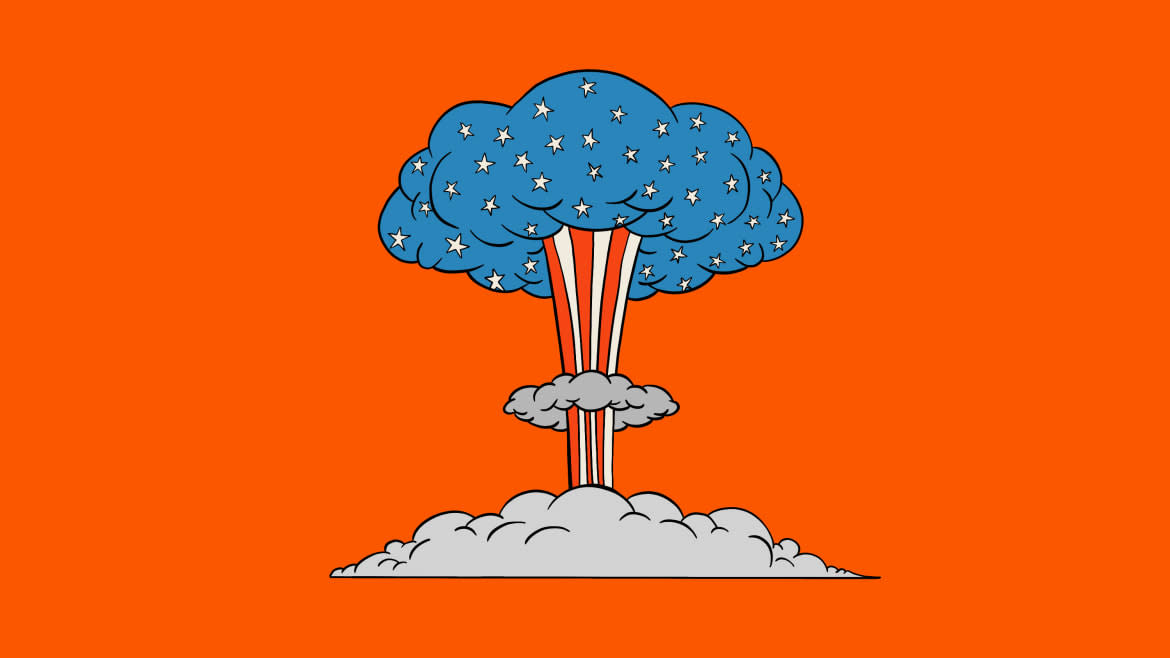To Avoid War, the U.S. Should Increase Its Nuclear Arsenal

- Oops!Something went wrong.Please try again later.
- Oops!Something went wrong.Please try again later.
The late George Shultz, former secretary of state for Ronald Reagan and a Cold Warrior, once advised against proliferating nuclear weapons. He quipped that “proliferation begets proliferation,” which the arms control lobby has used for decades to prevent the U.S. government from developing nukes.
But Shultz’s quip is easily falsifiable. A decade of Russian, Chinese, North Korean, and soon Iranian proliferation has not begotten proliferation by the United States.
The New Strategic Arms Reduction Treaty (New START) with Russia went into effect in 2011. It reduced the high-yield (and misguidedly called strategic) nuclear weapons each side has and puts a cap on their totals.
Russia Mutiny Is More Proof the World Needs to Get Rid of Nuclear Weapons
Until a few months ago, when Russia suspended its participation, both sides were abiding by it. But, unlike the United States, Russia treated it as a green light to develop low-yield, short- and intermediate-range nuclear weapons—best described as theater nukes. The U.S. government believes that Russia has ten times as many such weapons as the United States.
China’s not falling behind. Two years ago, the Middlebury Institute, using satellite imagery, found hundreds of new Chinese missile silos. While the communist regime’s total number of warheads is believed to be one-tenth of America’s (and estimates vary), the consensus is that the number of Chinese nukes doubled from 2020 to 2022, from 200 to 400.
As the rivalry accelerates, Chinese proliferation will also pick up more steam, and the United States could find itself in parity, even behind, the Chinese in this decade.
Meanwhile, Iran and North Korea are not falling behind. The Islamist regime has reached nuclear breakout, and it could weaponize a warhead within months—or even weeks. The Hermit Kingdom has been developing warheads since its first test in 2006.
Nukes are attractive weapons not just because they are destructive but also because they are cheap and do not require advanced technology. For some millions of dollars, a theater nuclear weapon could annihilate an entire battalion on a battlefield. They also provide some guarantee against invasion or airstrikes, especially if a nation’s intercontinental ballistic missiles can reach major American cities—or Israeli cities, if you are the Islamic Republic of Iran.
The United States has responded to these trends by upgrading its delivery systems. To convince the Republicans to ratify New START, the administration of President Barack Obama agreed to develop new delivery systems—and state-of-the-art sea, land, and air delivery systems are under development and production, soon to be delivered. This is necessary, but insufficient.
How Stalin’s Funeral Exposed the Crazed Cult of Soviet Communism
As Josef Stalin once said, quantity is a quality of its own.
One mustn’t take moral advice from the great tyrant, but it is indisputable that he understood power better than most. And he understood that quantity gave one power. He used it for evil, as will Russia, China, Iran, and North Korea with the power of their nukes. To stop the triumph of evil, the United States must respond in kind.
This was not a point lost on Shultz and the president he served, either.
Despite the caricature, Ronald Reagan despised nuclear weapons. Often portrayed as a warmonger, his dream was abolishing nuclear weapons altogether.
All nuclear treaties before his presidency limited nuclear proliferation at their current levels, but Reagan and Shultz managed to enact the first-ever treaty that reduced the number of nukes between the U.S. and the Soviet Union, and abolished an entire class of nuclear weapons.
They did it by, first, building more. And not just that, the development of a space-based defensive system, the Strategic Defense Initiative, convinced the Soviets that their much-beloved nukes could become obsolete—which was the purpose of Reagan’s program.
Iran and Russia Won Syria’s Civil War (and the U.S. Lost It)
Shultz also devised a “dual-track” strategy. The first track was deploying advanced nuclear-armed missiles to West Germany to convince the Soviets to engage in diplomacy. The second track was arms-control diplomacy. In plain terms, Reagan succeeded in nuclear arms reduction only by putting the fear of U.S. nuclear weapons in the hearts of the Soviets.
Arms control and reduction are noble goals, but only if they are not unilateral. Then you are leaving the fate of the world at the mercy of evil. It is regrettable, yet true, that our enemies are forcing us to return to nuclear armament.
Americans must not lose sight of arms control and reduction, but they should understand that it is possible to convince enemies to stop proliferating only if the United States increases the threat and cost of their proliferation by outpacing them and developing defensive systems that would make enemy nuclear-armed missiles obsolete.
Shultz was one of the greatest and most accomplished statesmen in American history, but his insight was wrong. Harold Brown, who served President Jimmy Carter as his secretary of defense, had a more useful insight on nuclear arms proliferation: “When we build, they build. When we stop, they build.”
Get the Daily Beast's biggest scoops and scandals delivered right to your inbox. Sign up now.
Stay informed and gain unlimited access to the Daily Beast's unmatched reporting. Subscribe now.

